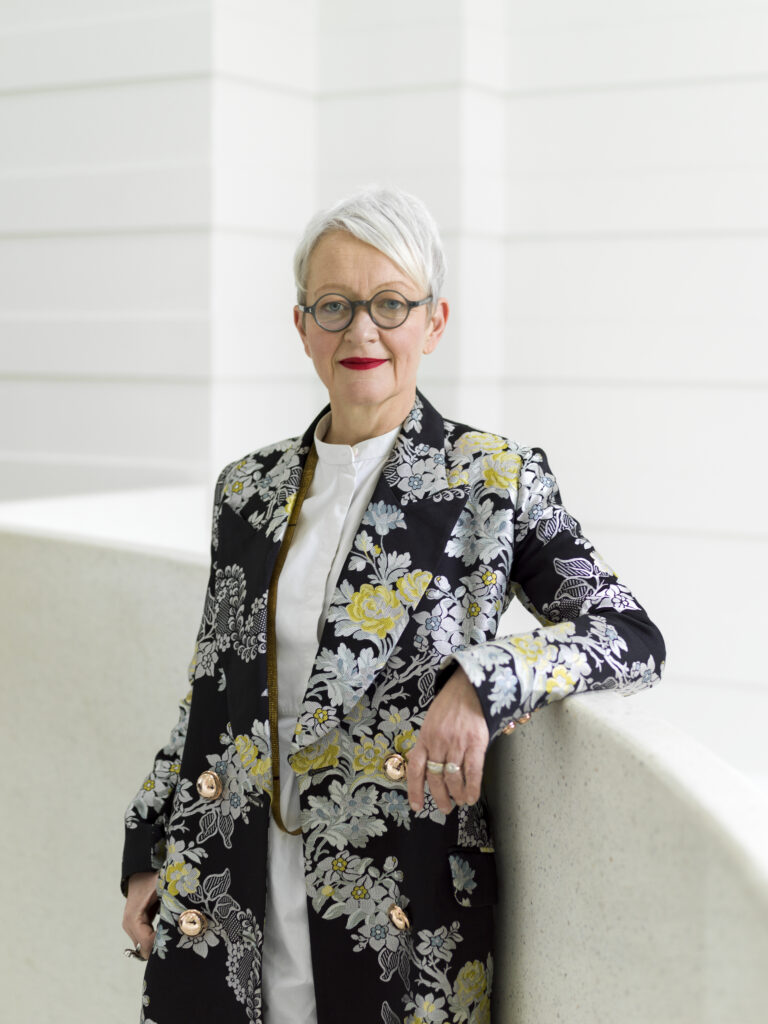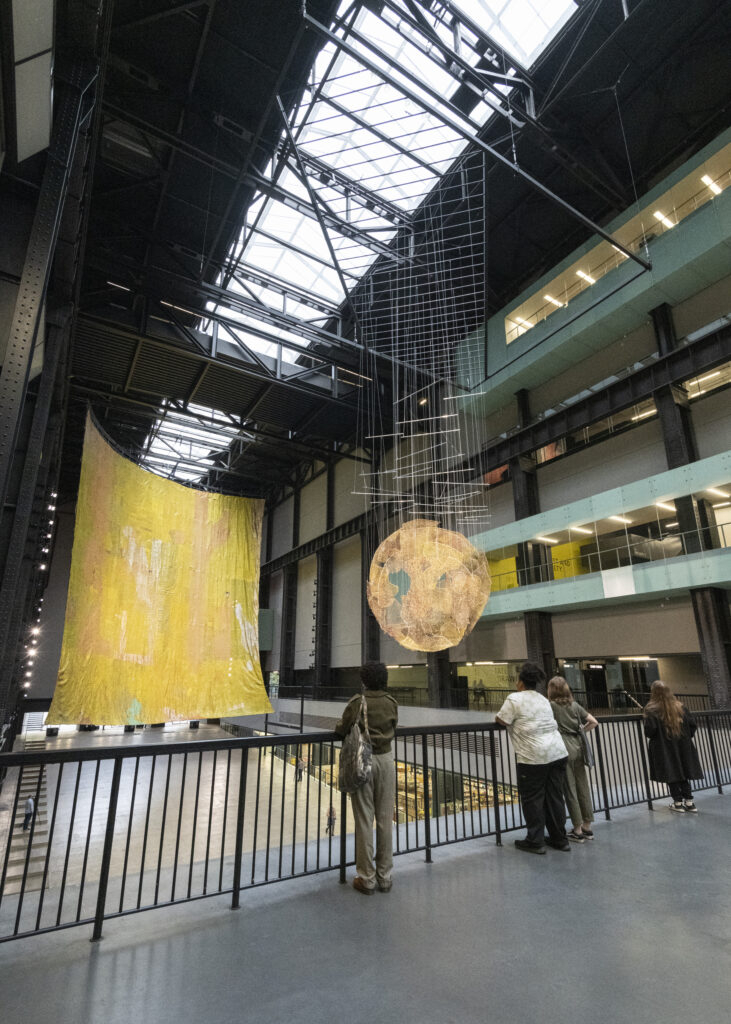Heat is on for the sector’s climate commitments
United Nations Cop meetings have become high-profile markers in the global battle to tackle the climate crisis. The latest one, Cop28 – Cop stands for Conference of the Parties – took place in the United Arab Emirates in November and December.
About a month before, the UK museum sector held its very own Cop at Tate Modern in London.
The one-day conference, organised by the National Museum Directors’ Council (NMDC), was a follow-up to a two-day event, Museums and Galleries Responding to the Climate and Ecological Crisis, that took place in March 2022 at the Whitworth art gallery in Manchester, and was also organised by the NMDC.
There were lots of interesting discussions in Manchester, but the feedback was that the time for talking was over and urgent action was now needed. The UK Museum Cop at Tate Modern was created to address this.
“Everybody needs to act now if we are to have a hope of reaching net-zero targets and protecting the planet for future generations,” said Maria Balshaw, who opened the event as director of Tate and the chair of NMDC.
“The whole NMDC group recognises that it is vital for all of us to be engaged in tackling the climate and biodiversity crises – and we feel it’s an area where we can affect real change.”

Balshaw said Tate had reduced its carbon emissions by 60% by the end of 2023 and aims to reach net zero by 2030. Other climate work at Tate relates to how it manages travel, waste water, energy usage, recycling and biodiversity.
Balshaw said the organisation displays work by artists whose own practice addresses the climate emergency. Tate has also tried to embed green principles in the way it shows art and manages its collections, including the transport of works.
Flurry of activity
The desire for action shown by the UK Museum Cop reflects the direction of travel among the global museum community, with a flurry of climate-related statements, initiatives and pledges in recent months.
These include an updated green protocol from the Bizot Group, which represents the directors of some of the world’s biggest museums.
The protocol relates to principles and standards for environmental controls, and the updated wording reflects shifts in knowledge, evidence, technology and appetite for change. But the fact that the group states that “the care of objects is paramount” implies that is has not fully embraced the urgency of the situation.
The Network of European Museum Organisations has also been focusing on supporting organisations to contribute to climate action and sustainability.
Its Museums in the Climate Crisis report, published in November 2022, made recommendations based on a survey of 578 museums across 38 countries.
This was followed up by its 2023 conference, which took place on 19-21 November in Lahti, Finland, and was titled And… Action! Museums in the Climate Crisis.
And, back to Cop28 itself, there has also been a global call for cultural heritage, the arts and the creative sectors to be put at the heart of climate action and policy.
This call was led by Climate Heritage Network, an international support group of government agencies, NGOs, universities, businesses and other organisations. The aim is for the Cop28 conference to adopt this and help ensure that culture is fully integrated into the future work of the UN Framework Convention on Climate Change.
The format of the UK Museum Cop conference at Tate Modern reflected the approach at the global event, in that prior to the meeting, a series of sub-groups was asked to consider a different key issue and propose actions and recommendations.
The areas of focus were: ethics; heritage buildings, adaptation and planning; Scope 3 challenges (Scope 1, 2 and 3 relate to different types of emissions); workforce and skills; funding; and collections and environmental conditions.
The idea was that delegates would then vote on the various proposals under the different areas of focus. This was an interesting approach but did lead to some challenges on the day, as delegates questioned some of the wording, pointed out omissions and suggested changes of emphasis.
And although there were representatives from Scotland, Wales and Northern Ireland at the conference, a lack of input from across the UK into the proposals was an issue.
Broad pledges
Nevertheless, the event resulted in several broad and uncontroversial pledges that everyone could get behind. These were related to engaging audiences with the climate crisis, introducing more sustainable collections management, developing and implementing decarbonisation plans, undertaking measures to mitigate the impacts of extreme weather and increasing the biodiversity of any green spaces that museums have.
There were also key recommendations that were a bit more specific and included a call for urgent changes to planning legislation and guidance, and increased investment to ensure the sustainability of heritage buildings. The creation of a new central resource linking to current advice and guidance on sustainability was also recommended.
In addition, it was urged that all museums should adopt a “greener option first” principle in all areas of their practice, including more intelligent and lower-energy environmental conditions for collections, more sustainable exhibition design and better transportation of objects.

Actions not words
These are important ideas, but the challenge will be to ensure they are funded, supported and implemented. There also needs to be an agreed way of measuring progress.
“It was great to see a breadth of topics covered and different museum professions brought together,” says Sara Kassam, a Museums Association (MA) trustee and sustainability adviser at UK Sport.
“I liked that NMDC has started thinking in terms of what action can be taken together and the power of the collective. But it doesn’t go far enough.
“Also, there needs to be more thought about applicability and scale. The NMDC is made up of very large and much smaller organisations, so needs and impact will be different. It needs to invest in proper sustainability expertise and resources to guide this work, rather than purely relying on volunteers and admin support.”
There was certainly a clamour in the room for advice and support to help museums take action, and a talk from two representatives from Burro Happold on Decarbonising Museum Buildings and Estates went down well.
The engineering firm has been instrumental in the creation of The Arts Green Book: Sustainable Buildings, which features guidance designed to assist in transforming practice in the cultural sector and set key stakeholders on the path towards zero carbon.
Sustainable procurement
The focus of the MA’s climate justice campaign this year is sustainable procurement, an issue that came up several times at the UK Museum Cop.
The MA has been developing practical tips and case studies to help museums undertake this work. And while the UK Museum Cop very deliberately focused on climate, future events could look at biodiversity issues in more detail if the demand is there.
Another issue is that a lot of the work at the NMDC on the climate crisis has been driven by Nick Merriman, who is leaving his post as the director of the Horniman Museum and Gardens in south London to become the chief executive of English Heritage.
The Horniman is a leader in the sector in this area, having developed a raft of initiatives, activities and programmes related to sustainability and nature, including a Climate and Ecology Manifesto.
Overall, there was a lot of positivity created by the UK Museum Cop and delegates were pleased to hear that, in many ways, practice in the UK is ahead of the rest of the world, including the US. Nevertheless, there is still much work to do – and this work needs to be done urgently.
“There is so much potential in the sector and some pockets of fabulous work, but it still doesn’t feel like progress is being made fast enough” says Kassam. “We need to consolidate, amplify and accelerate.”
